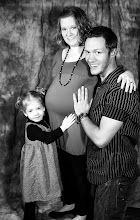What is termite baiting?
If your home is at risk of termite infestation or already experiencing a problem with termites, one solution is to use termite baiting.
But what exactly is termite baiting? For starters, it’s an alternative to the traditional barrier methods used by many exterminators and pest control companies, which uses a lot of chemicals and some structural changes to prevent the entry of termites into your home.
The simplest explanation is that termite baiting is the use of cardboard, wood, paper, and other termite food to lure termites into eating chemicals or poisons that kill them. Depending on whether you try to create a bait yourself or have a professional like New Jersey exterminator do it, baits can vary widely from one to the next.
Most baits involve the use of a slow-acting substance that is lethal to termites but still appealing enough for them to readily consume it and bring it to the nest where other termites will eat it as well.
No matter what substance is used, the most important thing about it is that it acts slowly. If the termites were to find the bait, eat it, and then die quickly after, it would not be effective in slowing the growth of the colony.
That’s because termites would avoid the bait if it were surrounded by dead termites, and also because the termites who found the bait wouldn’t have the opportunity to bring any of the poisoned food back to the rest of the colony to eat.
Baits like these are typically used against subterranean termites, which are the most common termites in the United States. That is because in order for the bait to be effective, it is typically placed near active termite nests or underground where termite activity is known to occur. The tunneling and colonial behavior of subterranean termites make them ideal for the use of baits like these.
In many cases, baiting will either kill the entire colony or kill enough of the colony that it no longer serves as a threat to the structure you are trying to protect.
Baiting is something that can be done yourself, but because of the use of chemicals and the potential of failure or even backfiring (where a homeowner accidentally attracts termites to their home more than before) due to inexperience, it can be best to leave it to professionals.
If you do choose to try baiting on your own, though, there are a few things to keep in mind. For one thing, you want to ensure you are baiting during the right time of year. For most areas in the United States, this time is the period between spring and fall — but this can vary if you live in warmer, wetter areas of the U.S.
Baits should be placed 10 to 20 feet apart along the parameter of your building, either above or below ground, since the termites will find them through random foraging rather than smell or sight. You also should place them in any areas where termite activity is known to occur.
Be sure to replace baits as necessary — if you purchase most commercial bait products, they typically come with some instructions on how and when to replace them.

Comments